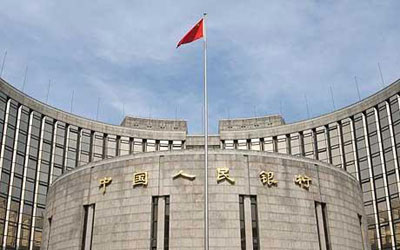

News, page 3, issue 464, April 12
Translated by Tang Xiangyang
Original article:[Chinese]

Though China just registered its first trade deficit in seventy months, the country's Ministry of Commerce is worried about the potential of a mid-year record trade surplus.
The central administration of customs released China's import and export trade data on April 12.
According to statistics released by the National Bureau of Statistics of China,The total value of China's first quarter imports and exports was 617.85 billion US dollars, a year-on-year increase of 44.1 percent. The first quarter value of imports was 301.68 billion US dollars, up 64.6 percent, and the value of exports was 316.17 billion US dollars, up 28.7 percent.
China's first quarter trade surplus of 14.49 billion US dollars is a year-on-year decrease of 47.9 billion US dollars. China had a trade deficit of 7.24 billion US dollars in March.
Chinese officials, including Premier Wen Jiabao, Commerce Minister Chen Deming and Vice Commerce Minister Chen Jian, have all stated that there is a possibility of a trade deficit in March. Though they do not agree on the size of the deficit, they all believe it will not be too large.
The numbers show that China's manufacturing industry is clearly improving, as are China's exports.
Statistics from the China Federation of Logistics & Purchasing show, China's Purchasing-Manager Index (PMI) reached 55.1 in March, an increase of 3.1 percentage points; this is the 13th month it has surpassed 50 which is a critical marker of whether the Chinese economy is shrinking or expanding. HSBC had a different reading and announced that China's PMI last month reached 57, ranking it the third highest PMI in surveyed history.
The new export orders index reached 54.5 in March, indicating a recovery of China's export trade.
The trade deficit in March is mainly attributed to the increase in imports which, according to an official with the MOF, is driven by two factors:
One factor is, China's imports from some key countries exploded in March, with imports from the US rising by 65 percent.
Another factor is, due to the large demand of foreign orders pouring into the country's processing centers, there has been an increased import of parts and components, which has led to the trade deficit.
"Those [parts and components] imported in February and March will be exported as completed products which may create a huge trade surplus in June and July; that's what worries us," the above source with the MOF said, "but we have not investigated the structure of the increased orders, we have simply conducted a preliminary analysis."
Based on market analysis it is clear that with the influence of the world financial crisis weakening and the prices of bulk commodities, including international raw oil, metals and iron ore, rising again, China is facing the increased possibility of a price inflation of imported products. The inflated prices of imported products have driven the total value of import trade up and have played a positive role in reducing the trade deficit.
This article was polished by Rose Scobie

